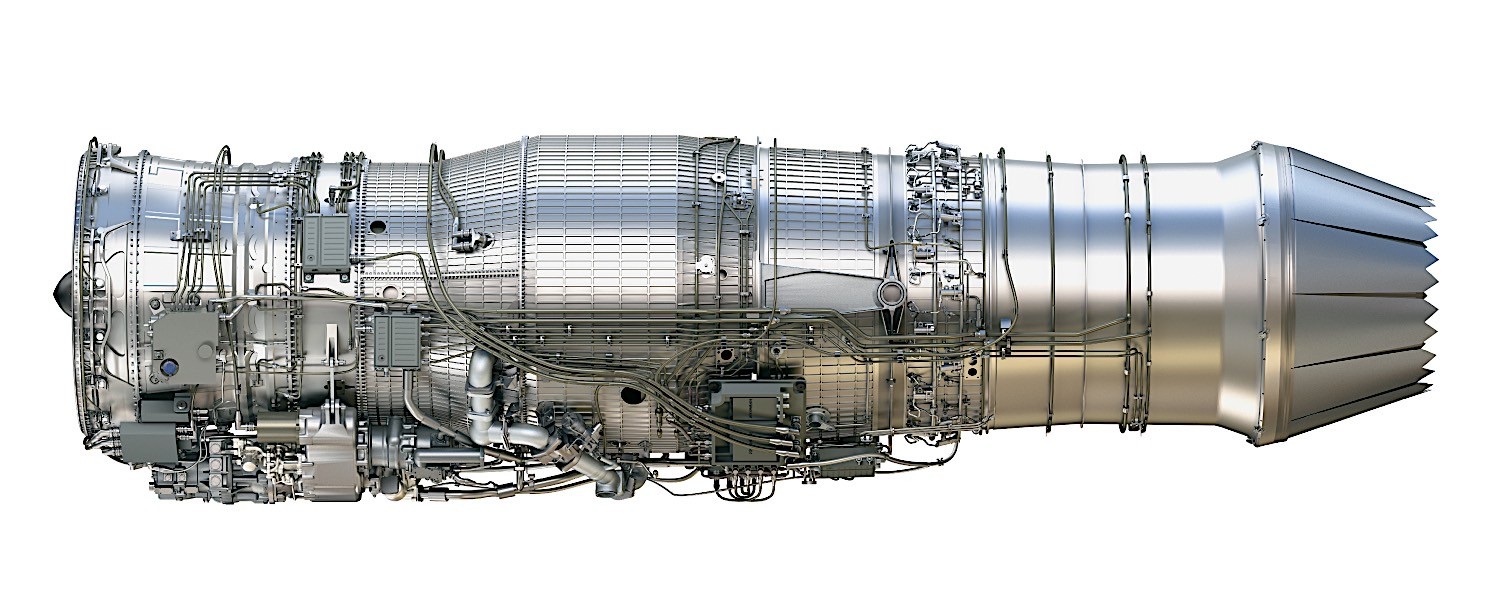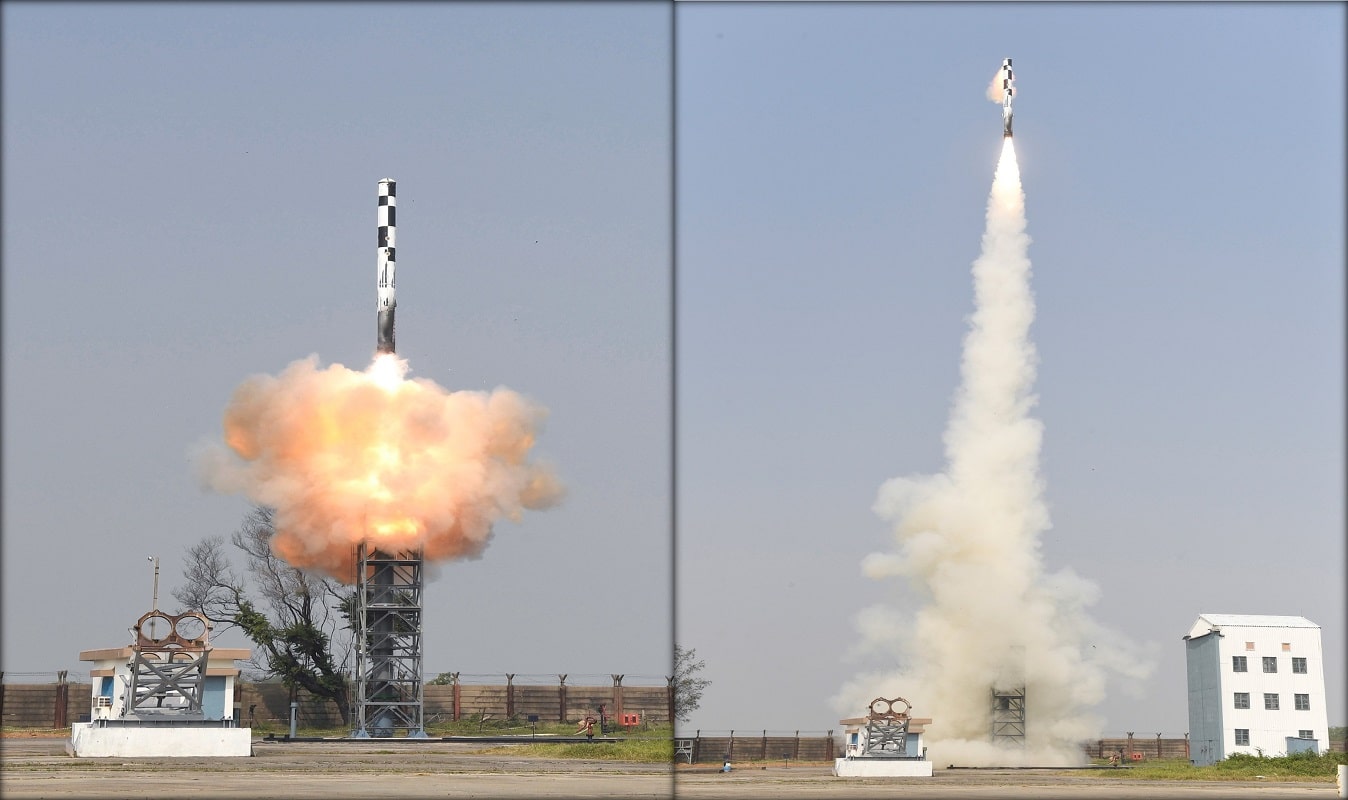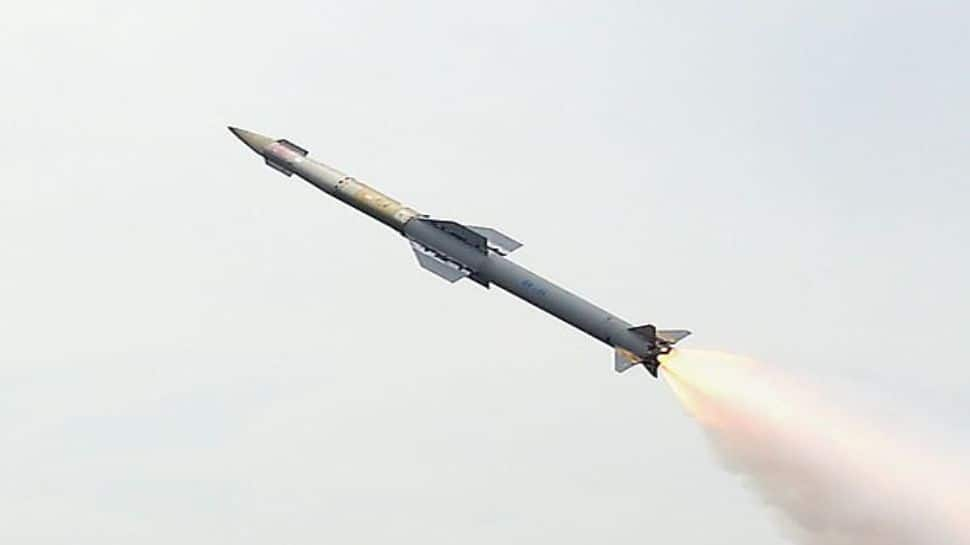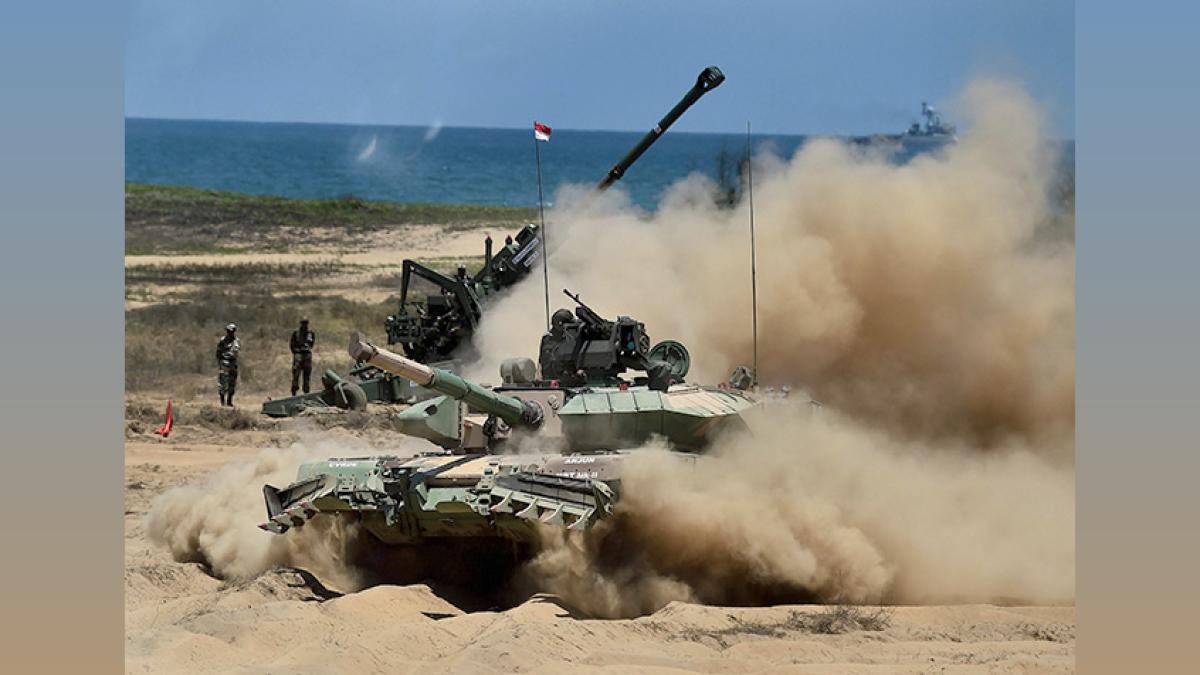SOURCE: RAUNAK KUNDE / NEWS BEAT / IDRW.ORG
India’s ambitious Ghatak Unmanned Combat Aerial Vehicle (UCAV) program is making significant strides, with the Aeronautical Development Establishment (ADE) and Defence Research and Development Organisation (DRDO) forging ahead in developing a 13-ton remotely piloted strike platform. According to reports from idrw.org, the Ghatak, designed to be powered by the indigenous Dry Kaveri engine, will not only serve as a deep-penetration strike platform but also feature an air-superiority unmanned fighter configuration.
This variant will equip its internal weapons bay (IWB) with air-to-air missiles, enabling Combat Air Patrol (CAP) missions to secure Indian airspace and counter rival strike packages. Despite pending final funding approval, ADE and DRDO are progressing with a prototype that could serve as an engineering model to test critical systems before entering the developmental flight test phase.
Continue readingSOURCE: RAUNAK KUNDE / NEWS BEAT / IDRW.ORG

In a significant development for India’s defense aerospace sector, sources close to idrw.org report that the Indian Air Force (IAF) is expressing keen interest in Tata Advanced Systems Limited’s (TASL) High-Altitude Long-Endurance (HALE) program based on the Grob G 180 SPn platform. TASL, a subsidiary of the Tata Group, acquired the intellectual property rights for the German-origin Grob G 180 corporate jet in 2021, with plans to transform it into a manned military aircraft tailored for intelligence, surveillance, and reconnaissance (ISR) missions.
In 2021, TASL made a strategic acquisition by securing all intellectual property rights for the Grob G 180 SPn, a low-wing, twin-engine composite corporate jet originally designed by German manufacturer Grob Aerospace. The platform, which never reached serial production due to financial constraints faced by Grob, was identified by TASL as a promising foundation for military applications. According to TASL, the aircraft is being re-engineered into a manned HALE platform capable of operating at altitudes of 41,000 feet, with a maximum ceiling of 45,000 feet. With a range of 1,800 nautical miles, an endurance of 6–7 hours, and a payload capacity exceeding 1,000 kg, the modified Grob G 180 SPn is designed to meet the IAF’s ISR requirements.
Continue readingSOURCE: RAUNAK KUNDE / NEWS BEAT / IDRW.ORG

In a significant development that could have far-reaching implications for regional air combat capabilities and defense research, sources close to idrw.org have confirmed that India has recovered at least eight pieces of debris from China’s PL-15E Beyond Visual Range (BVR) air-to-air missiles following a recent aerial engagement with Pakistan. Among the recovered items is one near-intact PL-15E missile, along with three partially damaged ones and four sets of missile fragments—none of which hit their intended targets during the engagement.
The recovery of a relatively intact PL-15E is particularly noteworthy, as it has been handed over to the Defence Research and Development Organisation (DRDO) for detailed technical analysis. According to defense sources, the missile’s Ku-band active radar seeker, reportedly still functional, and its dual-pulse solid rocket motor are currently under close examination at DRDO’s advanced weapons laboratories.
Continue readingSOURCE: AFI

In a significant boost to India’s indigenous defense ambitions, U.S.-based General Electric (GE) has expressed strong interest in supplying engines for the Indian Air Force’s (IAF) fifth-generation stealth fighter, the Advanced Medium Combat Aircraft (AMCA). According to an Economic Times report, GE Chairman and CEO Larry Culp highlighted the company’s eagerness to compete for the contract, underscoring India’s growing importance as a strategic market for both civil and defense aerospace sectors. This development comes as India accelerates its AMCA program to counter regional threats and bolster its air power, particularly in light of recent tensions with Pakistan and China’s advancements in stealth technology.
In an interview with The Economic Times, Larry Culp emphasized GE’s commitment to supporting India’s aerospace ambitions, stating, “We are very interested. If you look at what we’re doing with the Tejas with our 404 engines, we are right in the middle of probably what matters most in that regard.”
Continue readingSOURCE: AFI

India’s defense capabilities are poised for a significant leap forward as the BrahMos supersonic cruise missile, now with an extended range of 800 kilometers, is on track for induction into the Indian armed forces within the next two to three years. According to a report by the Indian Defence Research Wing (idrw.org), the missile successfully underwent its first test of the 800km variant in the Bay of Bengal earlier in 2025, marking a historic milestone in its development.
This extended-range BrahMos, known as the BrahMos-LR (Long Range), enhances India’s strategic reach, enabling precision strikes deep into enemy territory and reinforcing its deterrence posture against regional adversaries. As the missile progresses through further trials and refinements, its impending induction promises to reshape South Asia’s military dynamics, particularly in the context of recent tensions with Pakistan.
Continue readingSOURCE: AFI
In the wake of the May 2025 conflict, Pakistani defense analysts at Quwa, a prominent defense research platform, have raised concerns about India’s use of BrahMos cruise missiles, which demonstrated a formidable ability to strike deep within Pakistani territory. According to their assessments, the 15 BrahMos missiles fired during Operation Sindoor were from older stocks—specifically Block-I and Block-II variants—yet still managed to hit critical targets, including airbases at Nur Khan, Rafiqui, and Sargodha.
This has sparked alarm in Islamabad, as it underscores India’s growing missile capabilities and raises questions about Pakistan’s air defense vulnerabilities. With India reportedly developing an advanced Block-IV variant equipped with an indigenous Active Electronically Scanned Array (AESA) seeker, the strategic balance could tilt further, exacerbating tensions and threatening Pakistan’s economic and military stability.
Continue readingSOURCE: AFI
In the wake of the May 2025 Indo-Pakistan conflict, known as Operation Sindoor, the Pakistan Air Force (PAF) has issued a series of tenders to bolster cybersecurity infrastructure across its key airbases, including Nur Khan, Masroor, and Murid. These tenders, focused on strengthening cyber firewalls, reveal a growing unease within the PAF about vulnerabilities exposed during the conflict, particularly in the face of India’s sophisticated state-sponsored cyberwarfare operations.
While media coverage has largely centered on the physical destruction caused by Indian Air Force (IAF) strikes—such as the $7 billion in equipment losses, the tenders suggest that unreported cyberattacks may have played a critical role in India’s battlefield success. Specifically, Indian cyber operations are believed to have compromised the PAF’s command-and-control systems, potentially aiding in the detection of Chinese-supplied HQ-9 air defense systems and radar installations. The PAF’s rush to upgrade its cyber defenses, possibly of Chinese origin, indicates either a confirmed breach or heightened paranoia about India’s growing cyber capabilities, signaling a new front in the India-Pakistan rivalry.
Continue readingSOURCE: UNI

The Indian Army is poised for a significant enhancement of its air defence capabilities with the impending acquisition of the Quick Reaction Surface-to-Air Missile (QRSAM) system, valued at approximately Rs 30,000 crore. The Defence Ministry is expected to greenlight the procurement of three regiments of this indigenous missile system, developed by the Defence Research and Development Organisation (DRDO), during a Defence Acquisition Council meeting scheduled for late June.
The Defence Ministry is likely to take up the proposal for buying three regiments of the indigenous Quick Reaction Surface to Air Missile system (QRSAM) for the Army Air Defence for deployment along the country’s western and northern borders, defence officials told ANI. The meeting of Defence Acquisition Council is planned to be held around the fourth week of June.
Continue readingSOURCE: IANS

Indian astronaut Shubhanshu Shukla’s historic flight to the International Space Station (ISS) has yet again been delayed due to poor weather, the Indian Space Research Organisation (ISRO) said on Monday. The US-based Axiom Space is now scheduled carry Shukla along with three others, to the ISS from the Kennedy Space Centre in Florida aboard a SpaceX Falcon 9 rocket on June 11 at 8 a.m. ET (5.30 p.m. IST).
The mission was initially scheduled for launch on May 29, but was later deferred to June 8 and then June 10.“Due to weather conditions, the launch of Axiom-4 mission for sending Indian Gaganyatri to International Space Station is postponed from 10th June 2025 to 11th June 2025,” Dr. V. Narayanan, Chairman ISRO, shared in a post on social media platform X.
Continue readingSOURCE: IANS

The world organisation hopes that India could use its influence to get the Myanmar military regime, the National Unity Government and the ethnic groups to negotiate a peaceful solution to the conflict there, according to a senior UN official.
“India is a nation of influence” in Myanmar, the official said on Monday, adding that the situation in the country is “diabolical” with the earthquake adding to the already dire political and insurgency crises. “The challenge with this conflict is that it’s multifaceted, it’s not one side and an opposition: There is the Myanmar military and numerous ethnic armed organisations, people’s defence forces, and, also a more organised opposition through the former NLD” [the National Liberal Democracy Party, whose civilian government was overthrown by the military junta].
Continue readingSOURCE: PTI

BEML Limited on Monday said it has entered into three licensing agreements with the Vehicles Research and Development Establishment (VRDE), a premier DRDO laboratory, for the Transfer of Technology to manufacture critical mobility and support systems for the Indian Army’s Armoured Corps.
Under these agreements, Bharat Earth Movers Limited (BEML) will indigenously develop and produce the Unit Maintenance Vehicle (UMV) and Unit Repair Vehicle (URV) for MBT Arjun, and the Full Trailer for 70T Tank Transporter equipped with an Advanced Hydraulic Suspension System.
Continue readingSOURCE: PIB
WW16.jpg)
Keel Laying ceremony of Yard 1283, the fourth Next Generation Offshore Patrol Vessel (NGOPV) being built by Goa Shipyard Ltd. (GSL) was held on 09 Jun 2025 with Vice Adm Krishna Swaminathan, Vice Chief of the Naval Staff as the Chief Guest in the presence of Shri Brajesh Kumar Upadhyay, CMD, GSL and other senior officials from the Indian Navy and the Shipyard.
Construction of 11 Next Generation Offshore Patrol Vessels (NGOPV) is underway against contracts concluded on 30 Mar 23, wherein seven and four ships are being constructed by GSL, Goa and GRSE, Kolkata respectively.
Continue readingSOURCE: PTI

The Centre on Monday approved an additional amount of Rs 25 crore as compensation for houses damaged in the border areas of Jammu and Kashmir due to Pakistani shelling during Operation Sindoor. Prime Minister Narendra Modi recently announced the additional compensation amount for the houses damaged by Pakistani shelling.
As a special case, Modi said an additional compensation amount of Rs 2 lakh will be given for each fully-damaged house and Rs 1 lakh for each partially-damaged house. Following the prime minister’s announcement, Union Home Minister Amit Shah ensured swift action by facilitating an additional provision of Rs 25 crore from the Ministry of Home Affairs for 2,060 houses, an official statement said.
Continue readingSOURCE: PTI
Jammu and Kashmir Police have mounted facial recognition systems (FRS) along the Pahalgam route of Amarnath Yatra to fend off against any terror attacks against the pilgrims, an official said here on Monday. The system has a feature that alerts security forces in real time in case any blacklisted person comes into the frame of the surveillance cameras, he said.
Images of active terrorists and suspected overground workers have been fed into this system to ensure fool proof security for Amarnath Yatra.
Continue readingSOURCE: IANS

Five Left parties have written a joint letter to Prime Minister Narendra Modi, opposing the encounter killings of Maoist leaders in ‘Operation Kagar’ being carried out in the Chhattisgarh region.
In the joint letter, the five Left parties have written to the Prime Minister to put an immediate halt to the “extra-judicial” killings in the region around Chhattisgarh in the name of Operation Kagar. “There are several reports that several senior Maoist leaders are currently in the custody of the security forces. We demand that they should all be produced in court and dealt with as per the rule of law,” the letter said.
Continue reading